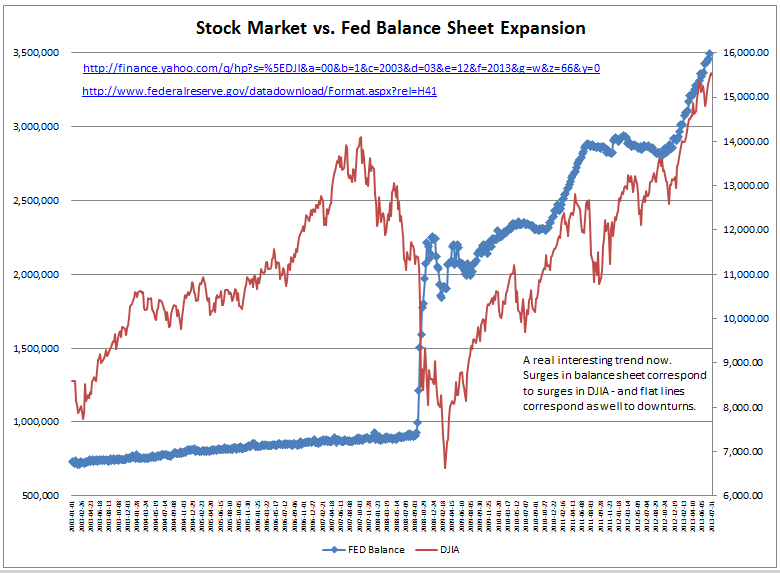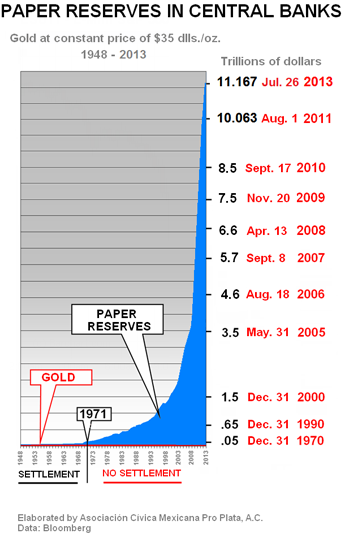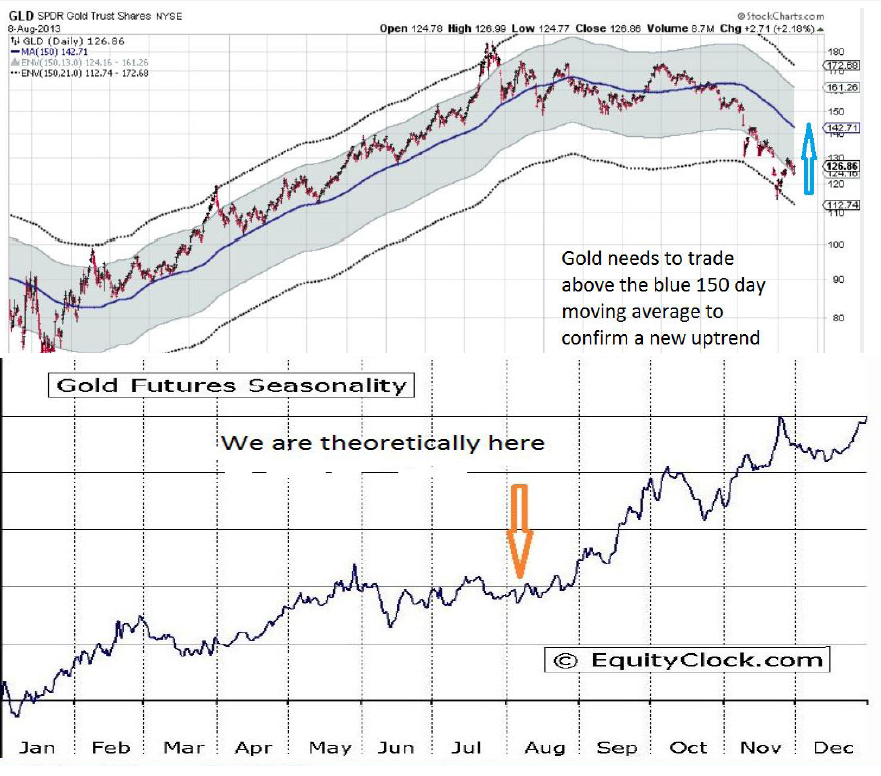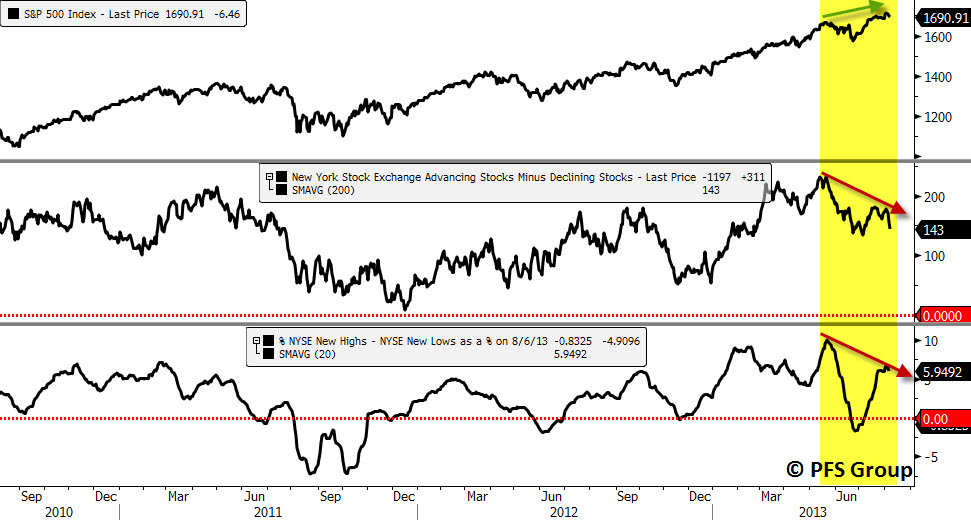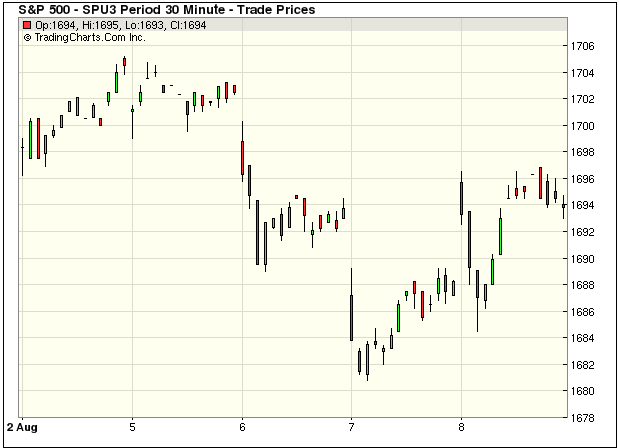Ever since the dawn of civilization gold has been a most highly desired commodity. Whether it is
sought after as an attractive shiny metal, for perceived medical benefits, industrial uses, coinage,
or protection against government created inflation, gold has been in high demand since its discovery.
Gold and The Ancient World
Ancient civilizations discovered gold and it immediately became highly valued for ornamentation,
rituals, and even coinage. Gold is mentioned throughout the Bible. Gold is mentioned at the very
beginning of the Bible, identifying the location of gold deposits when describing the geography of
the Garden of Eden (Genesis 2:11). The Egyptians describe gold in hieroglyphics dating back over
4500 years. The first known map, more than 3000 years old, maps an area of Egypt used to quarry
stones, but includes a gold mine as well. Gold became very popular around the world with gold coins
appearing in Lydia (modern day Turkey) and in China by the 6th century. It entered its own “industrial”
era when Romans began using a crude form of hydraulic mining to extract gold in 25 BC in Spain and
later in Romania. Gold production then shifted to Mali in Africa. With Columbus’s discovery of the
America’s, the vast gold deposits of Central and Southern America opened up, resulting in the vast
wealth of the Spanish Empire and inflation in Europe as the money supply, which was based on the
gold standard, rose to record levels. That gold standard survived for the most part until 1971, bringing
us to today’s floating rate currency system.
The first and most well known use for gold is as jewelry. Again, the Bible mentions gold being used
as jewelry as far back as the time of Abraham. The ancient Egyptians wore gold jewelry and often
buried important people with gold jewelry and masks. Gold is also known to have been used as
jewelry in ancient Sumeria, Crete, Greece, England, and China. It is commonly accepted that gold
was in fact used to make jewelry everywhere it was available. The metal was in high demand in
ancient times and continues to this day for its intrinsic beauty both shiny and colorful. Additionally,
like diamonds and platinum today, gold is also an assertion of wealth and status. Pure gold is very
soft, making it an easy metal to work with to create intricate piece of jewelry. As a result of gold’s
softness, it is usually mixed with other base metals to increase its hardness. Fortunately, gold
alloys are easy to melt down to recover the original pure gold, adding further to its value.
In ancient times, gold was also believed to have healing powers. Stories have it that Cleopatra
maintained her beauty by sleeping in a gold face mask. In ancient Rome, the wealthy treated skin
problems with gold salves. Possibly the most famous ancient cure-all, the Philosopher’s Stone,
was said to be able to turn any metal into gold and create the ÒElixir of LifeÓ, establishing the link
between gold and health forever. No less than Sir Isaac Newton, possibly the greatest scientist in
history, believed in the Philosopher’s Stone and attempted to create it.
The Modern Era
In modern days, gold is in fact used medically in specific instances. Some gold salts are used to
treat arthritis and other similar ailments due to its anti-inflammatory properties. More well known,
gold is often used as crowns and bridges in dentistry. Some cultures consider gold teeth to be
symbols of wealth, as in Central Asia, or just “cool” as in America’s hip-hop culture. Additionally,
gold-198 is sometimes used to treat cancer. In much more recent times, gold has found a number
of industrial uses, mostly in electronics. Gold is a great conductor of electricity and does not corrode,
making it ideal for transmission for use in wires, optical and semi conductors. High end stereo
equipment and cables are known for using gold connectors. Gold is even used as the reflective
layer on some high end CDs. Being extremely malleable, gold can be hammered into very thing
sheets and the resulting gold leaf is used in artwork or book edge gilding. Gold leaf, flakes, or
dust are sometimes added to food or drinks to show wealth or as a marketing gimmick, such as
in Goldschlþger, Gold Strike, and Goldwasser.
Gold as an Investment
As a trader gold has been utilized as a means to protect ones portfolio against inflation, market
and currency instability. Gold coins have a long history going back thousands of years but more
recent history has seen gold currency replaced by paper currency. Even when most countries
were still on the gold standard, people found it impractical to carry gold with them and instead
carried gold certificates in their wallets. Gold certificates enabled people to deposit their real
gold in the bank in exchange for a piece of paper that was much easier to transport. It also enabled
the bank to lend out the deposited gold and charge interest on that loan while keeping a small
percentage of the gold in reserve for demand deposits, thus creating fractional banking. Today,
gold coins are a type of bullion and not generally used for transactional purposes. The face value
on a gold coin has little relationship to the gold’s real value. However, many find owning gold coins
more practical than owning bullion due to their mass production by government mints, making them
more liquid, with tighter spreads, more easily recognized, and their weights guaranteed by the
minting government. Popular gold coins include the American Gold Eagle, Canadian Gold Maple
Leaf, Australian Gold Kangaroos, and South African Krugerrand. Others prefer using gold bars for
their larger sizes. Additionally, gold futures are settled in gold bars and not coins.
Mining Gold
The high price of gold is caused by supply and demand. While demand for gold is high for the
many reasons mentioned above, supply is limited by the high cost required to extract it in a select
number of locations where the metal can be found in sufficient quantity and quality. During the
age of gold prospecting, individual prospectors flocked to new gold finds. Think of the 1849ers
who went to California in droves to strike it rich. And that was followed by the Klondike Gold Rush
in the 1890s after gold was discovered in Alaska. In those days, prospectors came prepared with
a pickaxe and pan. But with obvious finds used up, the gold mining industry has turned to
technology to find gold.
Gold is now much more difficult to find and extract. Current gold mining yields just 1 to 5 grams of
gold for each 1000 kilograms. Furthermore, gold is only visible to the naked eye at concentrations
of 30 grams per kilograms, requiring advanced technology to find gold deposits. Today, corporations
with major funding use seismic, gravitational, or magnetic tests to search for high concentrations of
gold within the ground. Samples are then taken by digging trenches or drilling down. This is a major
expense and often results in a find with no or little gold.
Once a gold deposit is found, the difficult task of extraction begins. Most often, a method known as
gold cyanidation is used. Tons of earth is dug up and mixed with a cyanide solution. The gold dissolves
within the cyanide, enabling easy collection of the gold-cyanide solution. The gold can then be
collected out of the solution. The current method is to collect the gold using a porous carbon matrix.
Further refining and smelting is then done to remove any other metals still mixed with the gold, such
as silver, copper, mercury, and iron. The cost of this process varies widely, depending mostly on the
concentration of gold within the earth. On April 2, 2009, AngloGold, the third- biggest producer of gold,
said it will produce between 4.9 and 5 million ounces at an average cost between $435 and $450 an
ounce in 2009.
Total gold production was 2500 tons in 2007, the most recent year for which data is available. It is
estimated that 158,000 tons of gold has been mined throughout history is 158,000. If melted and
reformed into a cube, each side would measure 20.2 meters (66 feet).
Economics of Gold
For most of human history, gold has had no “price” since gold was the currency of choice and other
goods were priced in terms of gold. Adam Smith, in The Wealth of Nations, argued that gold indeed
had a price and that all goods and services including gold should be priced in terms of units of labor.
The problem with this, of course, is that each countries labor costs and thus its gold production costs
were different. Still, gold continued to be used as the standard of pricing. However, starting with
modern economic history in the early 1700s, the world gradually shifted to paper currency, at first
backed by gold and later backed by “the full faith and credit” of the issuing government.
In “recent history,” the US adopted the gold standard in 1834 with gold fixed at a price of $20.67 per
troy ounce. This Dollar standard survived until 1933 when President Franklin Roosevelt devalued the
Dollar to $35 per troy ounce of gold in 1933. In 1971, after foreign governments demanded gold in
exchange for their Federal Reserve Notes, draining the US of its gold bullion, the US finally ended
its tie to the gold standard. Without a gold standard and the Federal Reserve free to print money and
expand credit, the United States saw a surge in inflation and gold prices rose dramatically. By 1980,
gold had risen to $850, twenty-four times its price from just nine years earlier. After that bout of extreme
inflation, the US Central Banks went into an anti-inflation mindset that drove the rate of price inflation
down from 15% to near zero and gold fell by 70% to $250 as of 1999. But memories are short and the
Federal Reserve started worrying about defilation in the recession and market crash of 2000-2003.
The Fed again started expanding credit, creating a huge real estate bubble. When the bubble burst,
the Fed attempted to fix the problem with an even greater expansion of credit. As a result of this record
breaking credit expansion, gold set a new record high of $1,023 in 2008.
Rumors and Truth
Fort Knox is said to be the most impregnable vault on Earth: built out of granite, sealed behind a
22-tonne door, located on a US military base and watched over day and night by army units with
tanks, heavy artillery and Apache helicopter gunships at their disposal.
Since its construction in 1937 the treasures locked inside Fort Knox have included the US Declaration
of Independence, the Gettysburg Address, three volumes of the Gutenberg Bible and Magna Carta.
A month after President Nixon resigned over the Watergate affair Congress demanded to inspect
the contents of Fort Knox but the trip to Kentucky was dismissed by critics as a photo opportunity.
Three years earlier Mr. Nixon brought an end to the gold standard when France and Switzerland
demanded to redeem their dollar holdings for gold amid the soaring cost of the Vietnam War.
Ron Paul, the Texas Congressman and former Republican presidential candidate, is concerned
how much gold remains stored there and who owns it. He is worried that no independent auditors
appear to have had access to the reported $137 billion stockpile of brick-shaped gold bars in Fort
Knox since the era of President Eisenhower. Mr Paul has so far attracted 21 co-sponsors for a
Bill to conduct an independent audit of the Federal Reserve System – including its claims to Fort
Knox gold. Many gold investors suspect that the US has periodically attempted to flood the market
with Fort Knox gold to keep prices low and the dollar high – perhaps through international swap
agreements with other central banks – but facts remain scarce and the US Treasury denies that
any such meddling has gone on for at least the past decade. The website of the US Mint says
that the 147.3 million troy ounces of gold in Fort Knox Òis held as an asset of the USÓ.
It does not elaborate.
Paul Craig Roberts was Assistant Secretary of the Treasury in the Reagan administration. He is
coauthor of ÔThe Tyranny of Good IntentionsÕ writes: “If incompetence in Washington, the type
of incompetence that produced the current economic crisis, destroys the dollar as reserve currency,
the “unipower” will overnight become a third world country, unable to pay for its imports or to sustain
its standard of living. How long can the US government protect the dollar’s value by leasing its gold
to bullion dealers who sell it, thereby holding down the gold price? Given the incompetence in
Washington and on Wall Street, our best hope is that the rest of the world is even less competent
and even in deeper trouble. In this event, the US dollar might survive as the least valueless of the
world’s fiat currencies.”
Conclusion
Today, there is heightened interest in gold again as a “store of value,” a way to hedge your investments
against government induced inflation and an unstable stock market. Gold did not become the de facto
currency of the world by a singular event and no government law can remove the demand to
own and use gold.
Through the free market, individuals found that using gold, and silver to a lesser extent, enabled
transactions to occur between two parties regardless of the goods they traded. Various cultures and
peoples have tried to use other items for currency throughout history: shells, grains, tobacco, precious
gems, works of art and paper, for short periods without success. Gold however, continues to create
marketsdue to its relative scarcity in addition to the worlds demand for it in modern technologies and
in jewelry. The United States may enjoy the world’s highest credit rating as the largest economy, most
powerful military, and its 220 year history of continuous representative government. However, the value
of its currency has come under scrutiny today. The history of gold currency however, goes back
thousands of years through the ancient civilizations of the Egyptians, Sumerians, and Chinese, through
multiple world wars and continues today reflected in the worlds gold reserves. Gold is a survivor in this
test of time and, in these unstable economic times gold reemerges as a time tested tool for asset
protection. Gold has never gone to zero as has the value of securities ranging from sovereign debt
(the debt of nations) to individual companies. It is indeed THE store of value for all recorded history!


